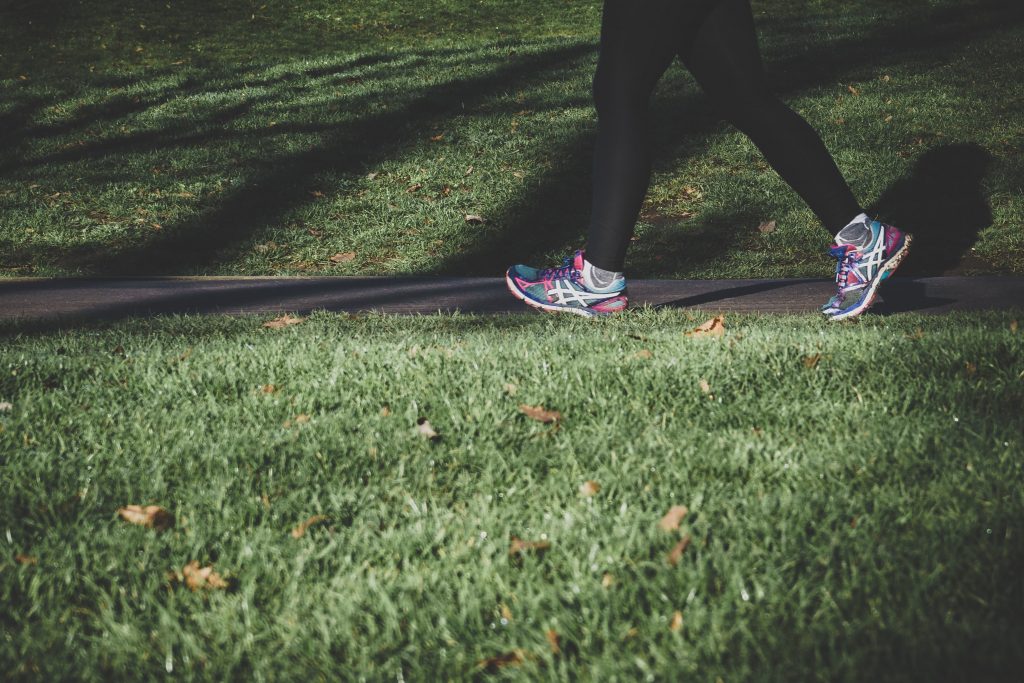One commonly believes that a person is either (physically) active or sedentary. Are there other options?
The World Health Organization recommends that adults aged 18-64 years “should do at least 150–300 minutes of moderate-intensity aerobic physical activity; or at least 75–150 minutes of vigorous-intensity aerobic physical activity” or an equivalent combination of both throughout the week1. During moderate aerobic activity (e.g. riding a bike, dancing, hiking), both heart rate and breathing rate increase and one feels warmer. Vigorous activity (e.g. running, swimming fast, riding a bike fast or uphill), in turn, implies breathing faster and harder, and you will need to pause in order to be able to say a few words2. Physical inactivity refers to levels of physical activity that are insufficient to meet the current recommendations3.
The number of adults that complies with the physical activity guidelines is usually around half (e.g. 51.7% in the Netherlands4) or two thirds of the population (e.g. 63% in Sweden5, 65.2% in United States6). Du’s study6, particularly, is a US nationally representative survey that included data from 27,343 participants. It had two key findings. First, that physical activity did not improve between 2007 and 2016, and second, that sedentary behavior significantly increased from 5.7 hours a day (2007) to 6.4 hours a day (2016). In other words, one decade after, people are equally active (or inactive) but significantly more sedentary, and this is worrisome, because sedentary behavior leads to higher risk of chronic disease and premature mortality7.
Many of us often misunderstand the distinction between sedentary behavior and physical activity. For instance, the general perception usually assumes that a person with low levels of physical activity is sedentary, and that a person conducting regular exercise is not sedentary. However, this is a misleading assumption. Sedentary behavior (let us carefully review the definition) refers to any waking behavior that we spent in a sitting, reclining or lying posture, with very low levels of energy expenditure (≤1.5 the amount of oxygen consumed while sitting at rest: 3.5 ml O2 per kg body weight x min)3. Therefore, here is the thing. You, me, anyone, can perform exercise regularly, comply with the official recommendations of physical activity, and yet, at the same time, have high levels of sedentary behavior!8 It means that even being physically active, one can still be exposed to the health risks of sedentary behaviors such as prolonged sitting. These are the implications of the sedentary self behind our physically active (or inactive) self.
It is worth mentioning some of the most typical sedentary behaviors among adults. The widely adopted Sedentary Behavior Questionnaire9, for example, comprises 9 items: watching TV, playing computer/videogames, sitting listening to music, sitting and talking on the phone, doing paperwork or computer work, sitting reading a book or magazine, playing a musical instrument, doing artwork or crafts, and sitting and driving a car/bus/train. Of course, the questionnaire is outdated at least in one thing: the use of smartphones that, in most situations, occurs while sitting, lying or reclining. A behavior that has globally overwhelmed all levels of society.
Given the current scenario, further national and international efforts are warranted, to not only promote physical activity but also reduce sedentary time. However, combatting physical inactivity is a challenging task. Despite the evidence that physical activity improves numerous health aspects, promoting exercise through social marketing campaigns and public health policies has proven to be (what has been called) a very “tough sell”10. Physical inactivity is perhaps “the biggest public health problem of the 21st century”11.
Therefore, our recommendation is for adopting behaviors that promote healthy levels of physical activity and reduce time on sedentary behaviors. One possibility is exploring mechanisms that facilitate both intrinsic and extrinsic motivations. To encourage self-management, public health policies and exercise treatments for instance, can empower individuals with the responsible use of novel technologies that facilitate health literacy and make physical activity fun and rewarding (e.g. virtual reality, wearables), especially among vulnerable populations such as patients living with chronic diseases and communities lacking access to internet and digital resources.
We invite you, then, to strengthen your active self while lessening your sedentary self.
About the author
Desiderio Cano Porras is a Postdoctoral Researcher at the Brightlands Institute for Smart Society (BISS), Maastricht University, The Netherlands.
References
- https://www.who.int/en/news-room/fact-sheets/detail/physical-activity
- https://www.nhs.uk/live-well/exercise/
- Tremblay, M.S., Aubert, S., Barnes, J.D. et al. Sedentary Behavior Research Network (SBRN) – Terminology Consensus Project process and outcome. Int J Behav Nutr Phys Act 14, 75 (2017)
- https://www.cbs.nl/en-gb/news/2020/17/half-of-dutch-population-meet-physical-activity-guidelines
- Bergman, P., Grjibovski, A.M., Hagströmer, M. et al. Adherence to physical activity recommendations and the influence of socio-demographic correlates – a population-based cross-sectional study. BMC Public Health 8, 367 (2008).
- Du Y, Liu B, Sun Y, Snetselaar LG, Wallace RB, Bao W. Trends in Adherence to the Physical Activity Guidelines for Americans for Aerobic Activity and Time Spent on Sedentary Behavior Among US Adults, 2007 to 2016. JAMA Netw Open. 2019;2(7):e197597.
- Biswas A, Oh PI, Faulkner GE, Bajaj RR, Silver MA, Mitchell MS, et al. Sedentary time and its association with risk for disease incidence, mortality, and hospitalization in adults: a systematic review and meta-analysis. Ann Intern Med. 2015;162(2):123–32.
- Prince SA, Cardilli L, Reed JL, Saunders TJ, Kite C, Douillette K, Fournier K, Buckley JP. A comparison of self-reported and device measured sedentary behaviour in adults: a systematic review and meta-analysis. Int J Behav Nutr Phys Act. 2020 Mar 4;17(1):31.
- Rosenberg DE, Norman GJ, Wagner N, Patrick K, Calfas KJ, Sallis J. Reliability and validity of the Sedentary Behavior Questionnaire for adults. J Phys Act Health. 2010;7:697-705.
- Ekkekakis P, Parfitt G, Petruzzello SJ. The pleasure and displeasure people feel when they exercise at different intensities: decennial update and progress towards a tripartite rationale for exercise intensity prescription. Sports Med. 2011 Aug 1;41(8):641-71
- Blair SN. Physical inactivity: the biggest public health problem of the 21st century. Br J Sports Med 2009; 43: 1-2

